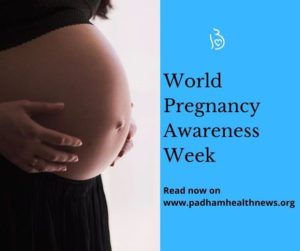“Safe motherhood is a human right, if the system lets the woman die, then the system has failed. Our task and the task of many like us….is to ensure that in the next decade safe motherhood is not regarded as a fringe issue, but as a central issue”.
– James, Wolfensohn, Ex-President The World Bank
Achieving motherhood is something very special which every woman looks forward to, but in the present day where we boast of tremendous technological advancement, the situation has not changed much from what it was 50 years ago. Especially in the underdeveloped countries, still there are a good number of maternal mortalities, says Dr.Rajasekar Chairman – Managing Director, Women & Children Foundation Ltd.Chennai.
Everyday world over at least 1600 women die from a complication of pregnancy and childbirth, 585,000 women die each year. In addition to maternal death every year over 50 million women experience pregnancy-related complications, many of which lead to long-term illness or disability (including infertility).
The tragedy is that these mothers die not from disease, but during the normal, life-enhancing process of procreation. Mothers dying between the ages of 15 to 49 is an indicator of disparity and inequality between men and women. Women are the mainstay of the family, the key educator of children and often the main if not the soul, bread-winner.
Maternal death is the death of women while pregnant or within 42 days of termination of the pregnancy, regardless of the site or deviation of pregnancy from any cost related to or aggravated by the pregnancy or its management.
Measures of maternal mortality:- There are three main measures of maternal mortality
1. The maternal mortality ratio
2. The maternal mortality rate and
3. The lifetime risk of maternal death.
- Maternity Mortality Ratio represents the risk associated with each pregnancy, that is the obstetric risk. It is calculated as the number of maternal death during a given year per hundred thousand live births during the same period.
- Maternal Mortality Rate, measures both the obstetric risk and the frequency with which women are exposed to this risk. It is calculated as the number of maternal death in a given period per hundred thousand women of the reproductive age (usually 15 to 49yrs)
- Lifetime risk of maternal death: take into account both the probability of becoming pregnant and the probability of dying as a result of pregnancy cumulated across the women’s reproductive years
Women’s lifetime risk of dying from pregnancy:-
If an Indian girl working in America becomes pregnant her life time risk of dying in pregnancy in America is 1 in 3700, but when the same girl delivers in India, for social reasons her life time risk is 1 in 37.The medical causes of maternal death are similar throughout the world whether it is in America or in India.
Causes of maternal death:
Hemorrhage – 25%
Sepsis -15%
Eclampsia – 12%
Obstructed labour- 8%
Unsafe abortion- 13%
Other direct causes- 8%
Indirect causes – 20%
- Haemorrhage:- Especially postpartum, (i.e. after delivery) is unpredictable, sudden in onset, and more dangerous when a woman is anaemic. Blood loss can very rapidly lead to death in the absence of prompt and appropriate life-saving care, which includes administration of drugs to control bleeding, massage of the uterus to stimulate contraction, and blood transfusion if necessary. Venous access must be carried out before referring to any pregnant patient to a referral or nearby hospital.
- Sepsis:- Which is often a consequence of poor hygiene during delivery or of untreated sexually transmitted disease, this accounts for some 15% percent of maternal Such infections can be effectively prevented by careful attention to clean delivery and by deduction in management of STD’s during pregnancies. Systematic postpartum care will ensure rapid detection of infection and its management by appropriate antibiotics.
- Hypertensive disorders in pregnancy, particularly eclampsia (convulsion or fits), is the cause of approximate 12% of all maternal death. Death from hypertension disorders can be prevented by carefully monitoring during pregnancy and by treatment with relatively simple drugs.
- Prolonged obstructed labour accounts for 8 % of maternal death. This is often caused by cephalopelvic disproportions (the infants head cannot pass through the maternal pelvis) or by an abnormal lie. This can happen when girls marry young and are expected to prove their fertility, often before they are fully-grown.
- Complications of unsafe abortion are responsible for a substantial proportion of (13%) maternal death. One in three or more of all maternal deaths are associated with unsafe abortions. These deaths can be prevented if women have access to contraceptive information and quality care for the abortion-related complications, and where the law does not prohibit abortion. aggravated during pregnancy.
Safe motherhood is a human right issue. Death of women during pregnancy or childbirth is not only a health issue but also a matter of social injustice.
.

